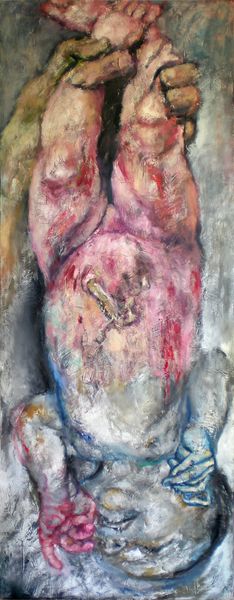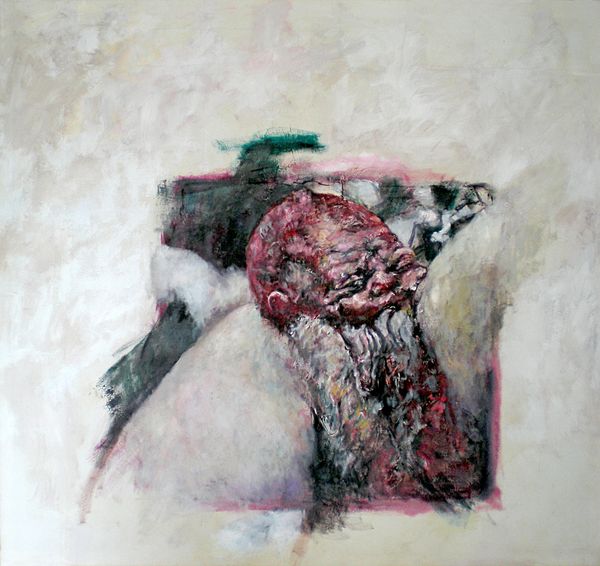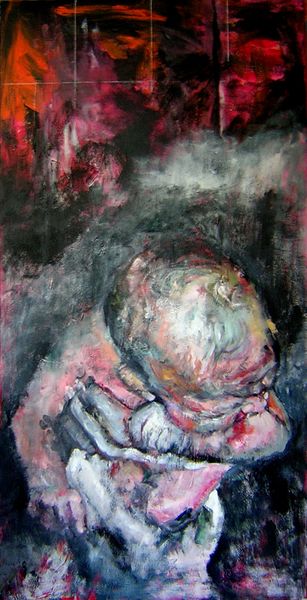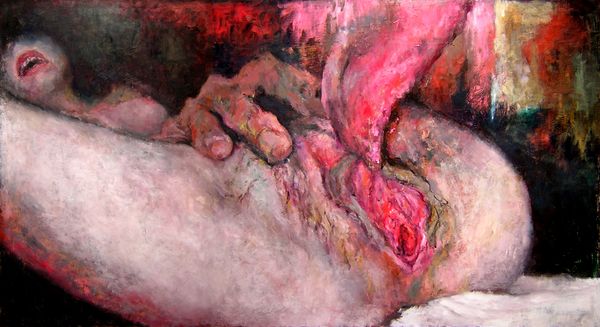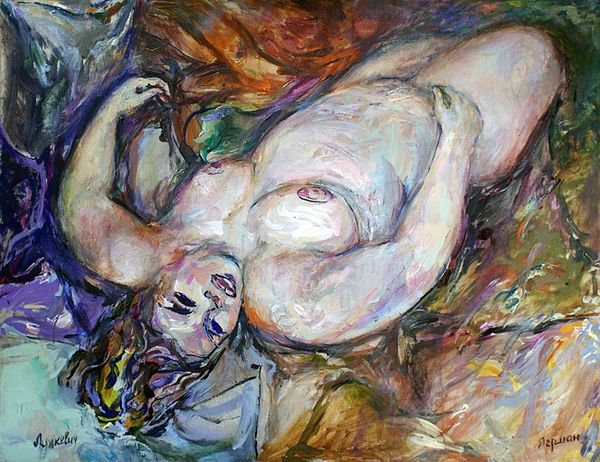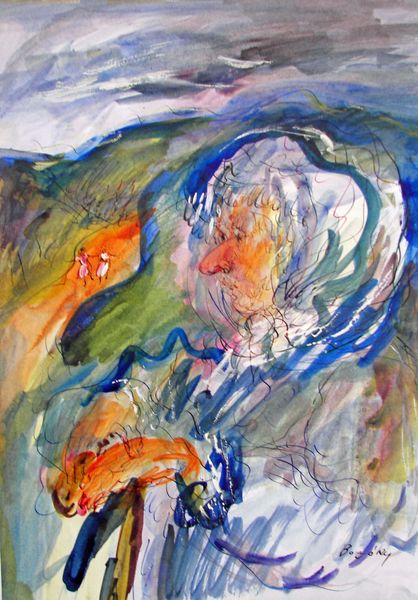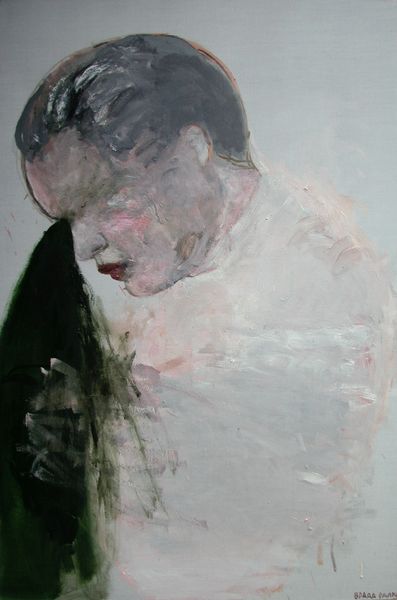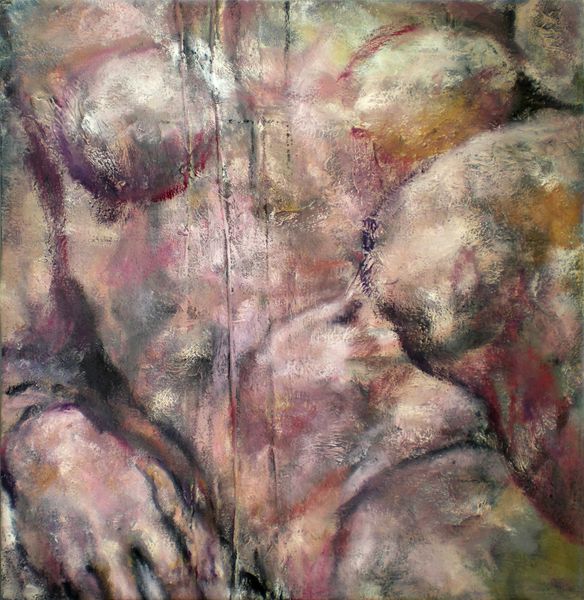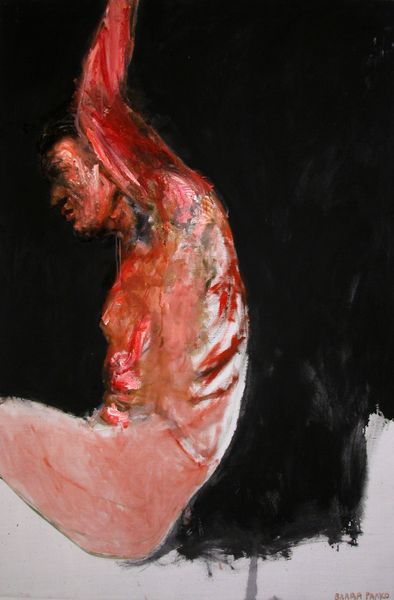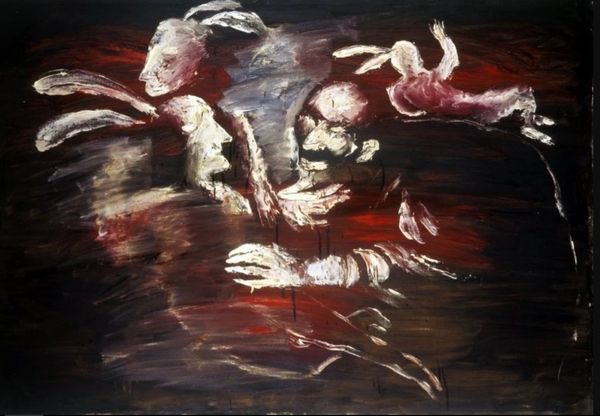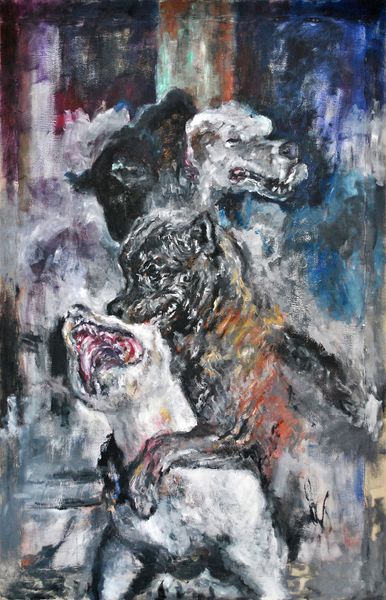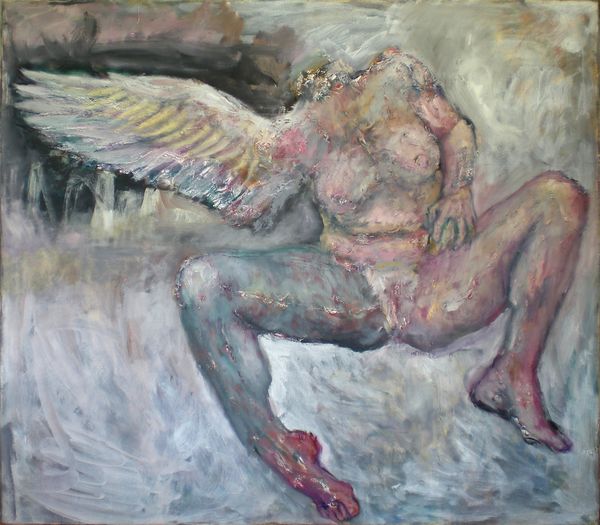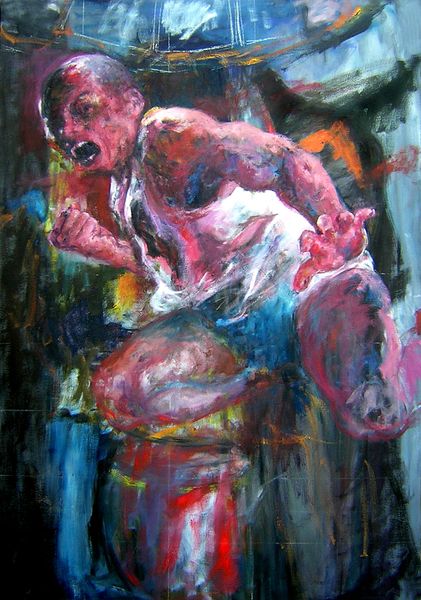
Copyright: Carmen Delaco,Fair Use
Editor: We're looking at "Birth III" from 2010 by Carmen Delaco, an expressionist piece made with oil and acrylic paint. It definitely has a raw, visceral feeling to it. What’s your take on this work? Curator: The materiality speaks volumes. Consider the sheer volume of oil and acrylic, troweled and smeared – it’s almost sculptural. The “birth” in the title, coupled with the aggressive application, hints at the messy, labor-intensive processes often hidden from view when we consume images. How does this physical act of creation challenge our assumptions about what constitutes "art," traditionally a more refined idea? Editor: That's interesting. I was focusing more on the abstract figuration, the sort-of-implied human form. Curator: Absolutely, the figuration is crucial, but what are the *means* by which it’s conveyed? Delaco uses a history of material processes, matter painting—she’s part of this legacy! The physical application becomes as important as the representation. Do you think the aggressive handling of the paint is part of the subject matter, showing something normally sanitized? Editor: I hadn’t considered it that way. I was initially caught up in the sort of primal feeling of the image itself, not necessarily the physical process of *making* that image. Curator: Exactly. Delaco uses materiality to expose the physicality of existence. "Birth" isn't just a concept; it's a messy, corporeal process mirrored in the application of paint itself. It pushes boundaries of fine art by prioritizing physicality. Editor: That shifts my understanding considerably. Thanks. Now, I see so many more possibilities to appreciate how Delaco created an entire perspective on the work with a single medium.
Comments
No comments
Be the first to comment and join the conversation on the ultimate creative platform.
